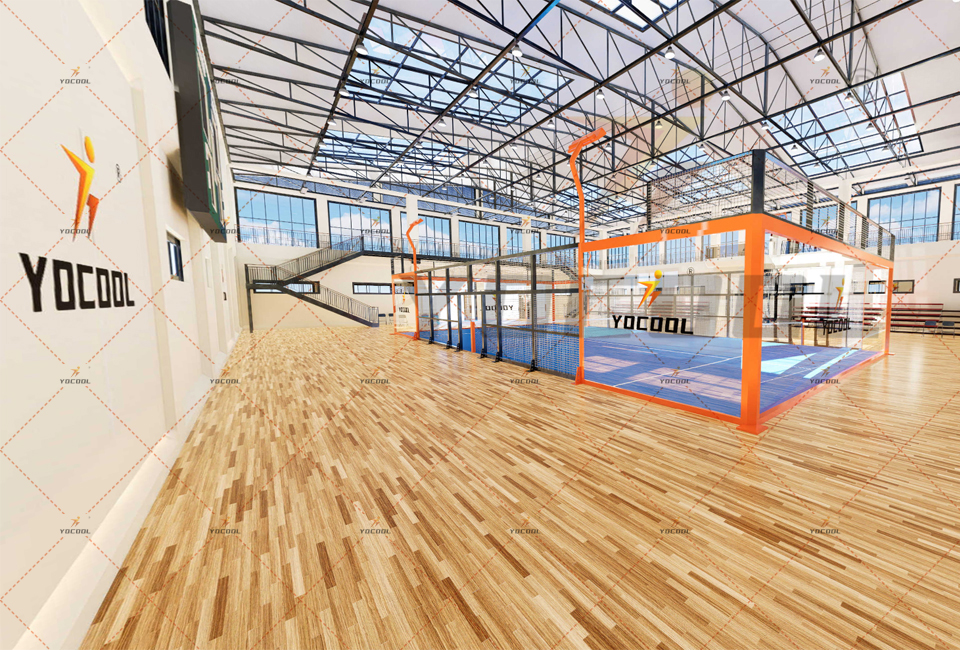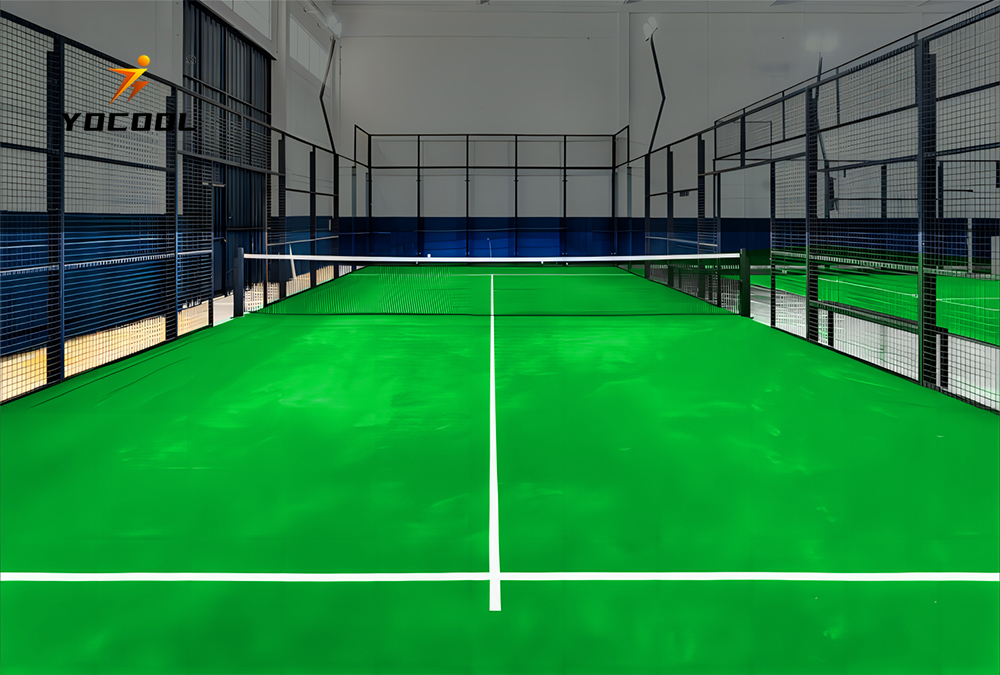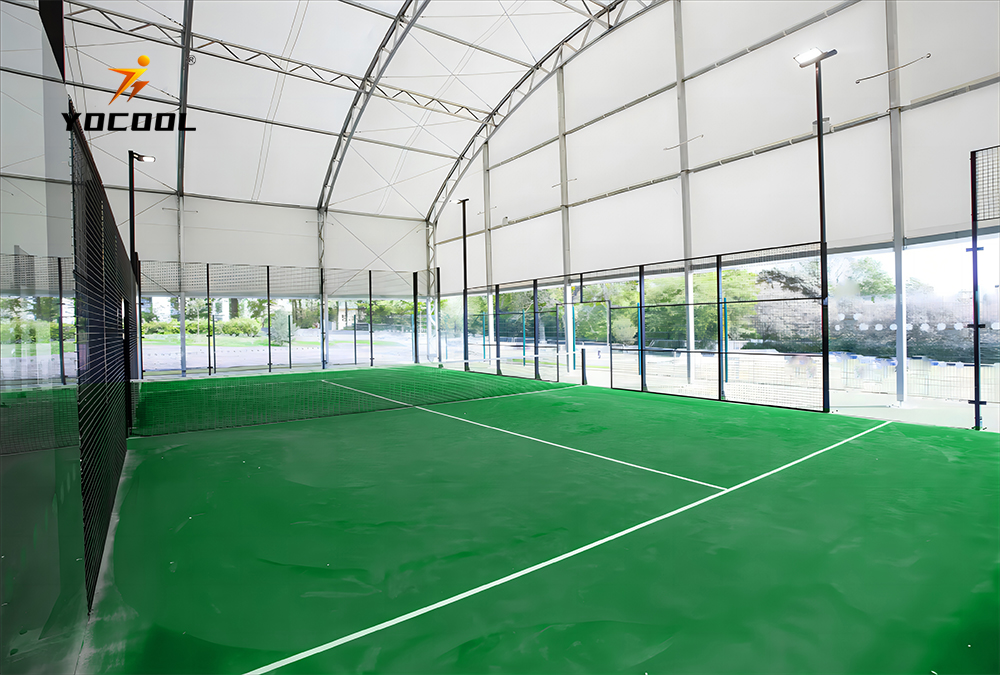

The global surge in popularity of paddle tennis, particularly in Europe and Latin America, has propelled significant innovation in the design and manufacturing of paddle tennis rackets. What was once considered a niche sport is now a mainstream athletic pursuit, driving demand for high-performance equipment that meets the rigorous demands of competitive play on both traditional and panoramic padel court installations. This section explores the current trajectory of the industry, highlighting key technological advancements and market dynamics that define the modern landscape of paddle equipment.
A primary trend is the relentless pursuit of optimal power-to-control ratios. Manufacturers are leveraging advanced composite materials and sophisticated structural engineering to create paddle racquet designs that cater to diverse playing styles. The shift towards lightweight yet durable materials, such as various weaves of carbon fiber and specific EVA foam densities, allows for greater maneuverability without compromising shot power or racket longevity. Furthermore, the integration of anti-vibration technologies has become standard, enhancing player comfort and reducing the risk of injuries, a crucial factor for both professional athletes and amateur enthusiasts who engage in extended periods of play on a paddle court.
Another significant trend is customization. As the player base expands, so does the desire for equipment tailored to individual preferences. This includes variations in racket shape (round, diamond, tear-drop), balance points (head-heavy, even, handle-heavy), and surface textures for enhanced spin. The rise of digital design and manufacturing processes, such as advanced CNC machining, facilitates rapid prototyping and production of specialized paddle tennis rackets, allowing brands to respond quickly to market demands and niche player requirements. This focus on tailored solutions underscores a maturing market that values both general performance and personalized fit.
Understanding the technical specifications of a paddle tennis court racket is critical for B2B stakeholders involved in procurement for sports facilities, retail, or professional teams. Modern paddle racquets are complex instruments, engineered for specific performance characteristics. The primary components include the frame, core, and striking surface, each contributing significantly to the racket's overall feel and playability.
| Parameter | Especificación | Impact on Play |
|---|---|---|
| Product Name | NO.2 Panoramic Padel Orange | Identifies specific model, often indicative of performance tier. |
| Forma | Teardrop/Hybrid | Balanced power and control, versatile for various player styles. |
| Core Material | Medium Density EVA Foam | Good balance of power, control, and comfort, suitable for intermediate to advanced players. |
| Frame Material | 100% Carbon Fiber | High stiffness and durability, excellent power transfer and stability. |
| Face Material | 3K Carbon Fiber | Provides a firm, consistent feel with good ball output and spin potential. |
| Weight | 365-375g | Standard weight offering a good balance of power and maneuverability. |
| Balance | Mid-Balance | Versatile for both offensive and defensive play. |
| Surface Finish | 3D Rough Surface | Enhances ball grip for improved spin generation on volleys and serves. |
| Thickness | 38mm | Standard maximum thickness, offering good power and stability. |

The production of high-quality paddle tennis rackets is a multi-stage process that combines precision engineering with skilled craftsmanship. This detailed process ensures each paddle racquet meets stringent performance and durability standards, critical for both amateur and professional use on any padel tennis court.
High-grade carbon fiber pre-pregs (pre-impregnated with epoxy resin) or fiberglass sheets are cut to specific patterns using precision CNC machines. EVA or polyethylene foam blocks, calibrated for desired density and hardness, are also cut and shaped for the core. Strict quality control ensures materials meet ISO 9001 standards for consistency and performance.
Precision molds, typically made from aluminum or steel, are prepared. These molds define the racket's final shape, thickness, and structural integrity. The inner surfaces are coated with a release agent to prevent sticking.
The cut carbon fiber or fiberglass layers are meticulously laid into the mold. This is a critical step, as the orientation and number of layers directly influence the racket's flex, stiffness, and durability. The foam core is then strategically placed within these layers. This process is often done by hand by skilled technicians to ensure precise alignment and prevent voids.
For pre-pregs, the resin is already present. For dry fiber lay-ups, epoxy resin is infused under vacuum. The mold is then closed and subjected to heat and pressure in a curing oven. This process, known as compression molding or vacuum bagging, consolidates the layers, cures the resin, and forms the solid racket structure. Controlled temperature and pressure profiles are maintained to achieve optimal material properties and minimize defects.
Once cured, the raw racket blank is carefully removed from the mold. Excess material (flash) is trimmed, and the edges are smoothed. This initial finishing stage prepares the racket for subsequent processing.
A key technical aspect of paddle rackets is the hole pattern. Using high-precision CNC drills, holes are created in the racket face. The size, number, and distribution of these holes are engineered to optimize aerodynamics, enhance the sweet spot, and reduce vibration. Different hole patterns contribute to distinct playing characteristics, such as increased control or power.
The racket surface may undergo additional treatments, such as applying a textured finish for enhanced spin or a protective clear coat. Graphics, logos, and branding are applied through advanced printing or decal processes, often followed by another clear coat for durability and aesthetic appeal.
The handle is wrapped with a comfortable and absorbent grip. A wrist strap is attached, ensuring safety during play. This marks the final assembly step.
Each finished racket undergoes rigorous quality control checks. This includes weight and balance verification, structural integrity tests (e.g., deflection, impact resistance), and visual inspections for cosmetic flaws. Compliance with international standards, such as those governing material strength and environmental resistance, is paramount to ensure product reliability and a consistent service life. This ensures that the paddle racquet can withstand the demands of extended use on a panoramic padel court.

The versatility and growing appeal of paddle tennis make high-quality paddle tennis rackets essential for a broad range of B2B clients. Our products are designed to meet the stringent demands of various application scenarios within the rapidly expanding paddle ecosystem.
Our commitment to producing technically superior paddle tennis rackets ensures that our partners can confidently meet the diverse needs of their clientele, whether for a casual game on a local padel court or for high-stakes professional competitions.
In the competitive market for paddle tennis rackets, discerning B2B buyers often evaluate vendors based on technical innovation, product reliability, and the ability to provide tailored solutions. While specific brand comparisons are beyond this scope, we can highlight critical differentiation points and our approach to customization.
| Característica | Round Shape Racket | Teardrop/Hybrid Shape Racket | Diamond Shape Racket |
|---|---|---|---|
| Primary Benefit | Control, Forgiveness | Balanced Power & Control | Maximum Power |
| Sweet Spot Location | Large, Central | Mid-High | Small, High |
| Balance Point | Low (handle-heavy) | Medium (even) | High (head-heavy) |
| Ideal Player Level | Beginner to Intermediate, Defensive | Intermediate to Advanced, All-Round | Advanced, Offensive |
| Core Hardness Preference | Softer EVA/FOAM | Medium EVA/FOAM | Harder EVA |
We offer extensive customization options for B2B partners, enabling them to perfectly match their paddle tennis rackets orders to their specific target audience or brand requirements. Our customization capabilities include:

Our dedicated design and engineering teams work closely with B2B clients to translate specific performance goals and branding requirements into tangible product specifications, ensuring a truly unique and market-leading range of paddle racquets.
A prominent international sports facility chain, operating over 50 padel tennis court locations, sought a reliable supplier for durable, high-performance paddle tennis rackets for their rental fleet and pro shops. Their primary challenge was finding rackets that could withstand heavy daily use while offering consistent playability for members of varying skill levels. We provided a customized solution, focusing on a robust carbon fiber frame with a medium-density EVA core for a balance of durability, control, and power. The rackets featured reinforced edges and a resilient surface coating to minimize wear and tear. Over an 18-month period, the client reported a 30% reduction in racket replacement frequency compared to previous suppliers, alongside overwhelmingly positive feedback from their members regarding racket feel and performance. This resulted in a renewed multi-year contract and an expansion of their order volume.
A leading padel academy specializing in elite player development required paddle racquets that could facilitate advanced technique training and match play for their professional athletes. The academy needed rackets with precise balance, specific sweet spot characteristics, and superior vibration dampening to support intensive daily training without compromising player health. We collaborated closely with their coaching staff to develop a series of diamond-shaped paddle tennis rackets featuring a hard carbon fiber face and a multi-layer EVA core. These custom rackets allowed for aggressive power shots, exceptional spin control due to a specific rough surface finish, and minimized arm strain. The academy reported enhanced player performance metrics and increased satisfaction among their athletes, affirming our capability to deliver highly specialized equipment for the most demanding professional environments.
Our manufacturing processes adhere strictly to international quality management systems, including ISO 9001 certifications, ensuring consistent product excellence. We conduct independent third-party testing for material strength, impact resistance, and environmental stability, providing verifiable data to our B2B partners. Our long-standing relationships with reputable sports clubs and retailers, combined with years of specialized experience in composite material engineering, underscore our position as a trusted authority in the sports equipment sector. Our commitment to innovation and quality is recognized by professional players and coaches across numerous paddle court venues globally.
A: Standard lead time for bulk orders typically ranges from 4 to 8 weeks, depending on the order quantity, level of customization, and current production schedule. For urgent requirements or very large orders, please contact our sales team to discuss specific fulfillment details and expedited options. We maintain efficient production lines to minimize turnaround times.
A: We provide a comprehensive 12-month warranty against manufacturing defects from the date of purchase. This covers material and workmanship issues under normal use conditions. Specific details regarding warranty claims and exclusions are available upon request and provided with every order. Our commitment to quality ensures long-term product reliability.
A: Absolutely. Custom branding is a core part of our service offering. We provide full customization capabilities for graphics, color schemes, surface finishes, and other design elements to align perfectly with your brand identity. Our design team will work with you to ensure your vision is realized to the highest quality standards.
A: Our manufacturing process adheres to strict ISO 9001 quality management standards. Every paddle tennis racket undergoes multiple stages of quality control, including material inspection, in-process checks during layering and curing, and final performance and visual inspections. We also conduct batch testing for structural integrity and material properties.
Our dedicated B2B customer support team is available to assist with inquiries ranging from product selection and technical specifications to order fulfillment and after-sales service. We believe in building long-term partnerships through transparent communication, reliable service, and a continuous commitment to product innovation and quality. For detailed information, technical assistance, or to discuss a tailored solution for your organization, please contact us directly via our website or provided contact channels.
este es el ultimo articulo
Premium Paddle Tennis Rackets: Power, Control & Durability
Premium Court Padel Solutions for Unmatched Sporting Excellence
Cutting Edge Padel Court Cover Innovation Worldwide
Padel Tennis Revolutionizing Modern Sports Infrastructure
Revolutionizing Sports Infrastructure with Panoramic Padel Court Solutions
Innovative Padel Court Glass Technology